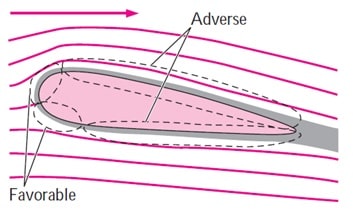
It is determined that substantial delays in separation can be achieved even when the suction is weak, provided that the suction is initiated at an early stage. Major modifications of the Lagrangian numerical method are required to account for suction at the wall. Johnson Published 1994 Physics, Engineering This research IS a theoretical and computational study of unsteady boundary-layer separation from a two-diinensional thin airfoil immersed in a uniform flow stream when the angle of attack is varied as a function of time. Unsteady boundary-layer solutions are then obtained, using a combination of Eulerian and Lagrangian techniques, for an airfoil at an angle of attack exceeding the critical value the effects of various parameters associated with the finite-length suction slot, its location and the suction strength are considered. Unsteady boundary-layer separation on a pitching airfoil Michael P. The pressure distribution on the edge of the boundary layer is same with the pressure distribution on the wall in the plate. First, steady boundary-layer solutions are obtained to determine the nature of suction distributions required to suppress separation on an airfoil at an angle of attack beyond the critical value (for a solid wall). The boundary layer of the airfoil is exerted by additional pressure generated by the curvature shape of airfoil compared to the constant pressure on boundary layer made of the plate with zero incidences. The study is carried out on a laminar airfoil in the. Here suction near the leading edge is studied as a means of controlling separation and thereby inhibiting dynamic stall. Abstract: The transition in the boundary layer is investigated using infrared thermography (IRT). When the angle of attack for a solid airfoil exceeds a certain critical value, the boundary layer in the leading-edge region separates in a process known to lead to dynamic stall.

Reynolds number based on the airfoil chord varies from 2.0×105 to 6. The airfoil is installed in the incoming wake generated by an airfoil aligned in tandem with zero angle of attack. High-speed incompressible flow past a thin airfoil in a uniform stream is considered. Transition characteristics of a boundary layer on a NACA0012 airfoil are investigated by measuring unsteady velocity using hot wire anemometry.


 0 kommentar(er)
0 kommentar(er)
